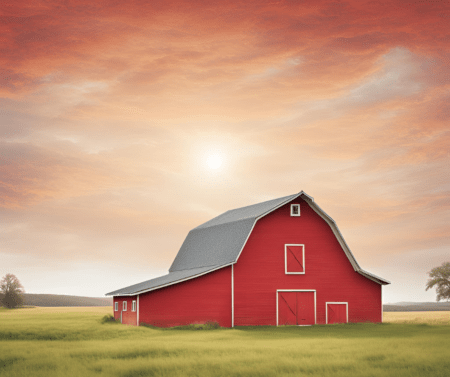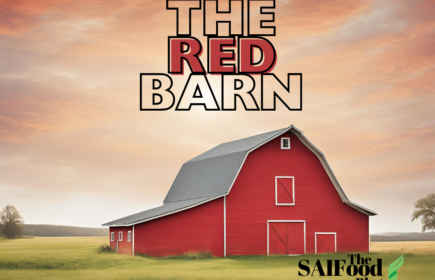Back in October, I referred to the nostalgic Red Barn in another post, which many conjure up in our heads when we think about a farm. But why is this? Stuart raised a great question to us, why were so many barns red?Well, it dates back to the late 1700s and early 1800s, in Europe and Scandinavia, where farmers would protect the barn wood by sealing it. Those who could afford to would paint/stain their wood with a linseed oil mixture (not all that different from the current paint bases of today). As the oil dried it would preserve the wood. It is also said that milk, lime, livestock blood, and ferrous oxide (rust) would be added to the mixture to help reduce the decay of the wood and to absorb sunlight, helping to keep barns warmer in the winter. It’s likely not intentional that barns were first painted red, it was a form of protecting their buildings and keeping out moulds. When settlers made it to the Americas, they had the same need to protect their barns, similar resources, and tight budgets. So they carried on this tradition of sealing their barns in paint, which often happened to have a red tint. By the latter part of the 1800s, companies were producing metallic oxide paints for barns, which was inexpensive compared to other paints on the market at the time. Hence, many farmers saw the practicality of using these red paints to preserve their barns. Later, whitewashing became cheaper, and white barns began to pop up. But, like many things, red barns became a part of the American tradition and were not forgotten.
When settlers made it to the Americas, they had the same need to protect their barns, similar resources, and tight budgets. So they carried on this tradition of sealing their barns in paint, which often happened to have a red tint. By the latter part of the 1800s, companies were producing metallic oxide paints for barns, which was inexpensive compared to other paints on the market at the time. Hence, many farmers saw the practicality of using these red paints to preserve their barns. Later, whitewashing became cheaper, and white barns began to pop up. But, like many things, red barns became a part of the American tradition and were not forgotten.
Red Barns and apple pie
I think of red barns like I do with the American flag and apple pie, it’s a part of the classic American image. It’s similar to how when many think of Canada they think of maple syrup, hockey players, and people with funny accents saying ‘eh! But is it an accurate representation? When settlers made it to the Americas, they had the same need to protect their barns, similar resources, and tight budgets. So they carried on this tradition of sealing their barns in paint, which often happened to have a red tint. By the latter part of the 1800s, companies were producing metallic oxide paints for barns, which was inexpensive compared to other paints on the market at the time. Hence, many farmers saw the practicality of using these red paints to preserve their barns. Later, whitewashing became cheaper, and white barns began to pop up. But, like many things, red barns became a part of the American tradition and were not forgotten.
When settlers made it to the Americas, they had the same need to protect their barns, similar resources, and tight budgets. So they carried on this tradition of sealing their barns in paint, which often happened to have a red tint. By the latter part of the 1800s, companies were producing metallic oxide paints for barns, which was inexpensive compared to other paints on the market at the time. Hence, many farmers saw the practicality of using these red paints to preserve their barns. Later, whitewashing became cheaper, and white barns began to pop up. But, like many things, red barns became a part of the American tradition and were not forgotten.

